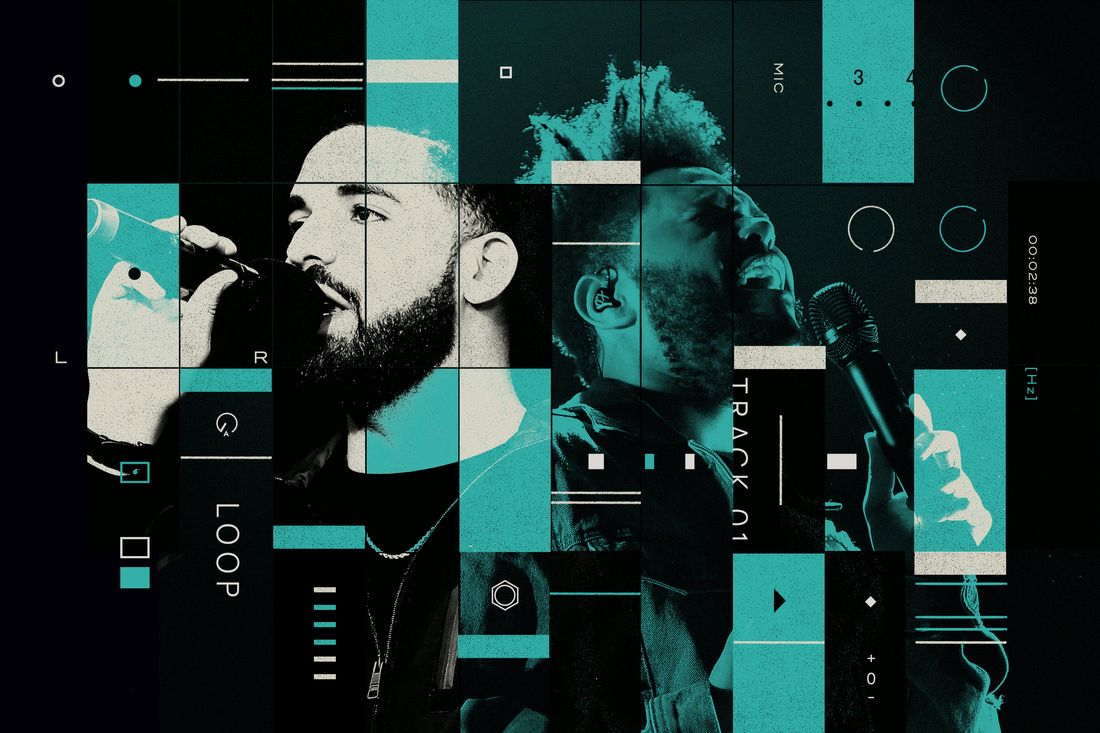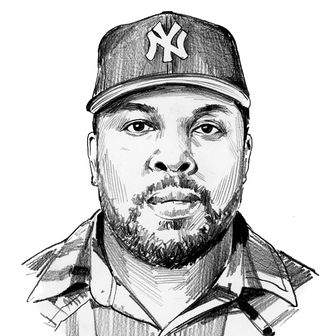
Music is math. There are only so many notes in a scale, and only so many pleasing chord progressions to be created from combining them. The field of commercial music is an economy of the familiar. Success is a tug of war between tested formulas and unique personal style — the balance is key. Travel too far off the beaten path, and you run the risk of losing your audience; but toy with tried-and-true sounds too much, and you might get hit with a million dollar lawsuit.
The line between stealing and borrowing in modern music has grown, to quote a popular copying case, blurred. Many of the great acts of the ’60s and ’70s — the Beatles, the Beach Boys, Led Zeppelin, Johnny Cash, Rod Stewart, etc — were challenged, often successfully, for taking credit for compositions that quoted other writers. The similarities were often clear cut; Led Zeppelin claiming credit for “Dazed and Confused,” a folk-rock song by the American singer-songwriter Jake Holmes two years before Led Zeppelin, and the blues standard “In My Time of Dying” is blatant misrepresentation of the story of a song’s creation.
But attitudes toward borrowing in music have changed incrementally since the end of the 20th century. The shift dovetails with hip-hop’s growth and the ways that rap producers have been able to morph and even break existing stigmas about quoting and sampling other artists’ work. ’80s rap was a Wild West period of collage art made through mostly uncontested cribbing. Sampling lawsuits made the practice expensive; by the ’90s, producers used chunks of old hit records to shore up their chances at charting and to flaunt their wealth. In the aughts, rappers tried each other’s beats and flows out to prove their proficiency and versatility. Listeners who came of age in the last three decades were, in effect, groomed into a new and evolving understanding of originality in music.
In 2019, the ways in which music is borrowed is more subversive. That’s because the job of a pop star is different than what it used to be. Once, you were expected to craft and curate your own musical pocket universe alongside a team of trusted collaborators. Today, it’s a game of ceaseless, crafty annexation. The median sound of the pop music of this generation is different from, say, ’60s psych and ’70s disco, developments in art that were inspired by drugs and politics, and the chintzy synth noise of the ’80s, which was a function of the creeping computerization of the world at the time. The sound of this decade’s pop doesn’t stem from a common experience that drives people toward similar interests. In 2019, a pop star is expected to be a jack of all trades, not just a master of one or two. Artists pounce on emerging trends as quickly as brands do; fresh sounds and innovations wash through the industry like runoff. Carelessness in a climate like this one can be costly. If your quest for a timeless groove puts you in marked territory, count on litigation, as Pharrell and Robin Thicke learned when they ran afoul of Marvin Gaye’s estate, spawning a lawsuit suggesting that “Blurred Lines” repurposed pieces of songs by the late Motown legend. Based on how these cases are amplified publicly — most recently, over Ariana Grande’s “7 Rings” — it would seem like the standards for borrowing in music are stricter than ever. But savvy, legal borrowing can be the cornerstone of a lucrative career — and the decade’s most successful artists are learning to walk this line.
The decade-long reign of Drake and the Weeknd over the texture of pop, rap, and R&B is a clinic in the speed at which new musical ideas are discovered, processed, and repackaged by others. Drake is as much a successful interpreter as he is a rapper or singer. He sees EDM flourishing, and he fishes for house production. He hears hits using triplet flows, and he gets proficient at fast raps. The practice has earned him respect and scorn in equal measure. He uplifts rising talent by giving young creatives sought-after space on his tours and records. But the displeasure of artists like XXXTentacion, who dissed Drake, citing striking similarities between the flow from the Canadian rapper’s “KMT” and his own “Look at Me,” and D.R.A.M., whose “Cha Cha” inspired “Hotline Bling,” suggests that popular artists get more out of borrowing sounds than they ever give back. Drake’s statement on the similarities between “Cha Cha” and “Hotline” speaks to the mindset songwriters are developing with regard to authorship in this decade: “You know, like in Jamaica, you’ll have a riddim and it’s like, everyone has to do a song on that. Imagine that in rap, or imagine that in R&B.” It’s the age-old line about imitation being an act of flattery.
The Weeknd made a name for himself on a trio of mixtapes that covered familiar source material in a coat of stoned euphoria. The vocals trafficked in gloomy, descending melodies, and the beats made your speakers sound like they were submerged in water. As Drake and the Weeknd’s downcast vibes infiltrated the charts, smart young upstarts saw a window of opportunity. For a while, you couldn’t get through ten minutes of urban radio without hearing a song that featured Drake or the Weeknd, or one that played fast and loose with the aesthetics of their music. Tory Lanez, Bryson Tiller, 6lack, and other bankable stars rose out of the moment. While Drake’s own musical tics proliferated in the work of his peers and successors, he flew to London, Jamaica, and Africa in search of sounds that would shore up his stability as a global hitmaker. The Weeknd sought out Benny Blanco, Diplo, Gesaffelstein, and Daft Punk, anyone who could give his music traction on a dance floor. The cycle never stops, least of all when you’re on top.
The commercial viability of songs that seem like little Matryoshka dolls, packed with allusions to and samples of other people’s work, is a function of the changing ways we experience music. Playlist algorithms lead us to songs that resemble the ones we already like. (Does a derivative band like the Led Zeppelin-lite quartet Greta Van Fleet grow without “recommended if you like” features?) Music pipes into our ears through cheapie phone and laptop speakers, through earbuds and AirPods that offer decent-but-not-world-class sound. It’s often made and digested quickly. Less and less people buy CDs each year. We stream songs we never get to feel like we own. It stands to reason that in a climate where music is like wallpaper, a pleasantry that colors rooms without taking up any corporeal space, certain stigmas about acceptable borrowing and copying in the minds of the listener would lift, leading savvy creators to chase each other’s market shares. Music is math, but the business is textbook American economics. The sure bet is king.
*A version of this article appears in the April 1, 2019, issue of New York Magazine. Subscribe Now!





